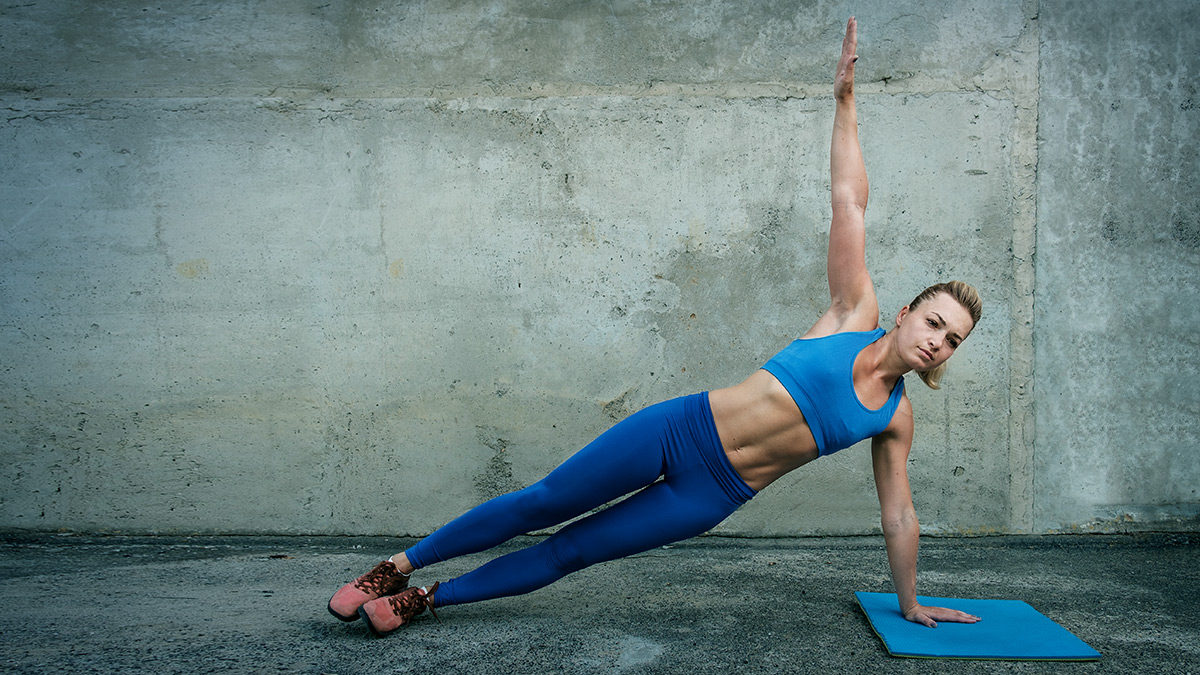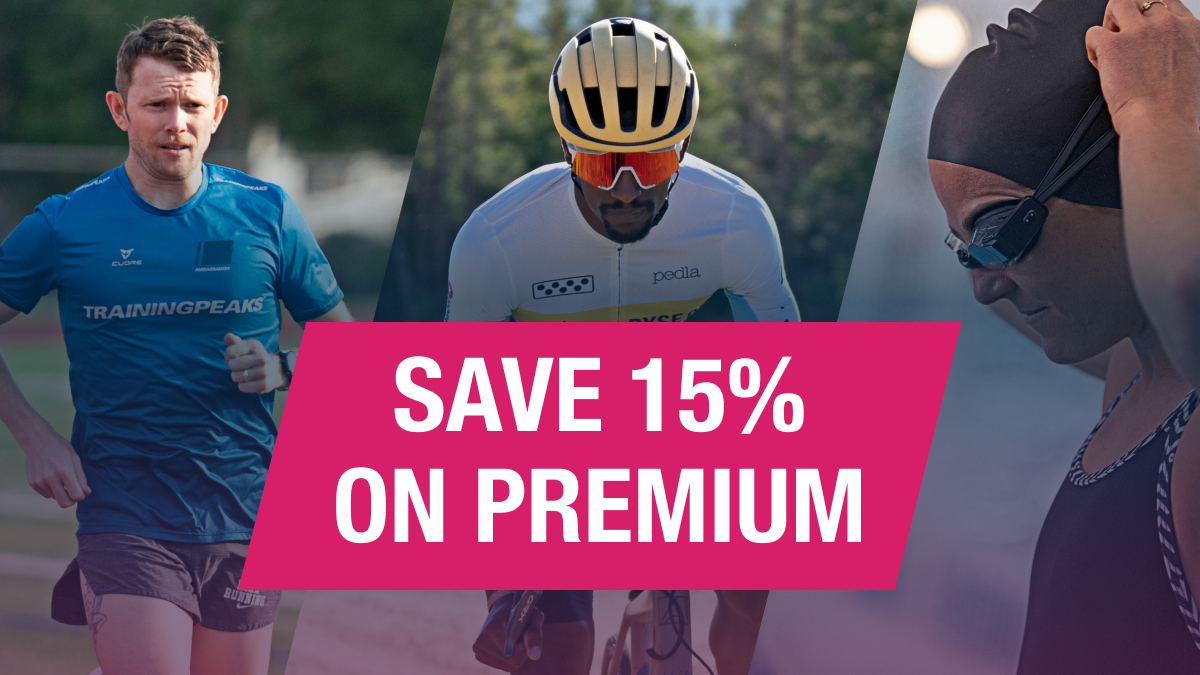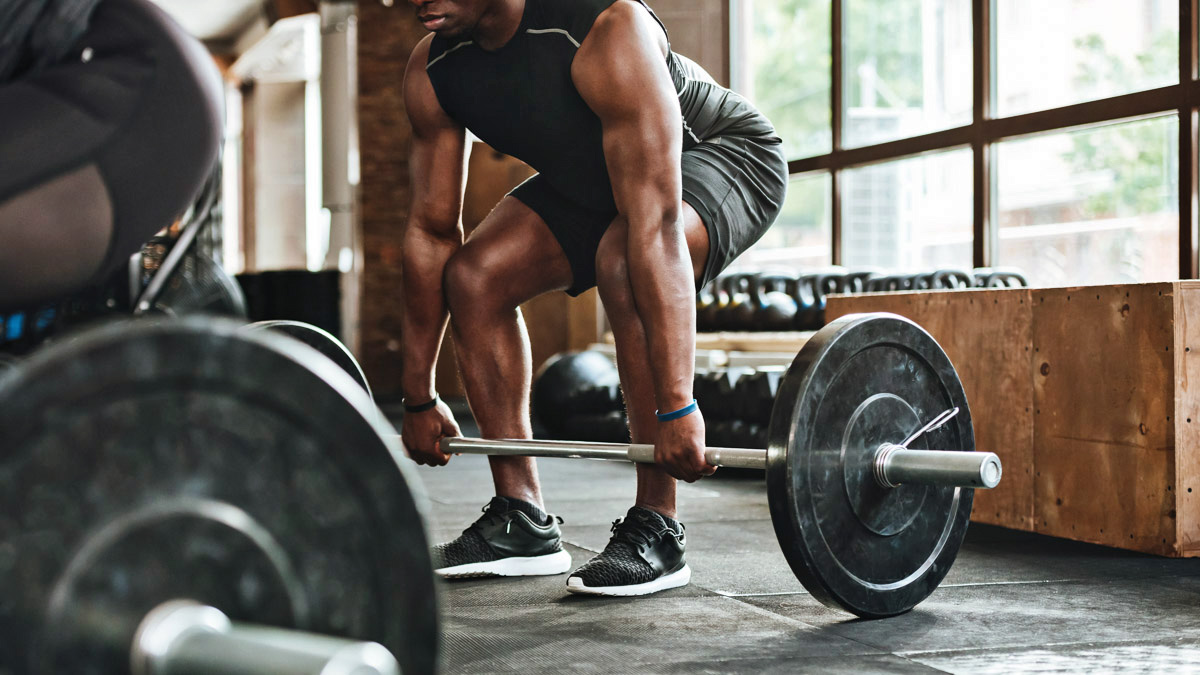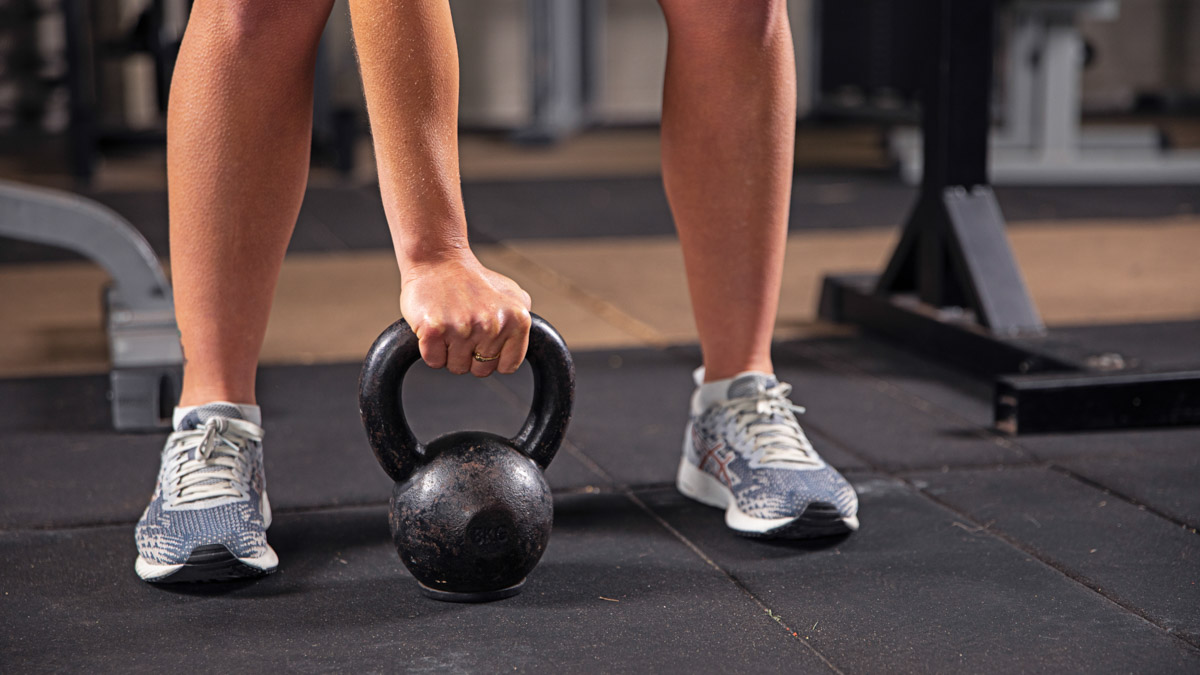You often hear athletes swear by “racing yourself fit.” This view is still a common one, but good coaches know strength training can help athletes in any discipline by building the supporting musculature, reducing the risk of injury, strengthening the joints and ligaments and, vitally, enhancing core strength.
This case study of one of my athletes will demonstrate the positive impact of a balanced, holistic and well-targeted strength and conditioning program.
Project Katie
Katie is an athlete that I’ve coached for the last 18 months. She’s slightly built, with a good power-to-weight ratio and a terrific competitive attitude. We first started working together after she had entered a local triathlon and got the racing bug. She had done OK but wanted to do better, and she improved all the way through the 2018 season.
When we started out, she had a natural talent, and great discipline to go with it. I loved the way she would never short-change me as a coach: if she had to cut a session short (she’s married with 2 small children) she always let me know, and she always paid it back by adding something on to the next session. She started to get some really good results but I knew she could step up a level if she could step out of her comfort zone to do, amongst other things, strength training.
Katie, her husband and I worked out a strategy for the next 12 months, with the aim of qualifying for the Great Britain Age Group team. She committed fully to the effort, and her husband (also a quality triathlete), was prepared to give his full support to “Project Katie.”
Addressing Deficiencies
For the winter of 2018-2019 we agreed to a strength and conditioning program as part of Katie’s training. We knew that her lack of core strength was affecting her in every discipline:
- In the swim she could not fully extend her stroke and could not keep her hips high enough in the water.
- On the bike she was stiff and tense, leaning too hard on the bars, and was not delivering her power effectively. She was also tiring as the race progressed.
- On the run she was not holding her form, and had a slight tendency to slouch which was impacting her pace and her ability to run strongly through to the finish.
Also affecting Katie’s swim was her lack of shoulder strength, since she did not have sufficient force from that area to execute a good catch and a strong pull. She was shortening her hand entry (and therefore her stroke length) in order to shorten the lever effect of a longer stroke. While this meant that she didn’t put strain on her shoulders, it also meant that we couldn’t build a strong stroke. Her power-to-weight was good but we weren’t able to use it effectively.
Enlisting an Outside Perspective
For the S&C program, I especially wanted Katie to build her core strength which would help in all disciplines, and it was clear that we also had to build some shoulder strength and enhance her shoulder mobility. However, I had to be careful because Katie had never done any previous strength training, and I didn’t want to demotivate her or worse, cause injury.
To make sure we were on the right track, I asked a friend with better qualifications than I have in S&C to create Katie’s program. He gave us a balanced range of lightweight exercises, largely using bands rather than weights. The emphasis of the program was on mobility and building shoulder strength, and most of the exercises were very precise.
Here’s an extract to give you the idea:
| EXERCISE | EQUIPMENT | REPS | REST | SETS |
| Kneeling external shoulder rotations to the left | Band | 6 each arm | 30s | 3 |
| Kneeling external shoulder rotations to the right | Band | 6 each arm | 30s | 3 |
| Kneeling external shoulder rotations upwards through 90 degrees | Band | 6 each arm | 30s | 3 |
| Superman extensions | 5 (3-5 second hold) | 30s | 2 | |
| Stability ball rollouts | Stability ball | 6 (3-5 second hold) | 30s | 3 |
| T Plank | 3 each side (8-10 second hold) | 30s | 3 | |
| Swim rhythm with ball | Stability ball | 1 minute FC |
This workout shows a couple of things: firstly, that a good strength program is more varied than many might imagine; secondly, that it doesn’t have to involve heavy weights—or indeed, any weights. The idea was to use resistance without impact or shock to the muscle, and to enable Katie to vary the resistance to the exact point of providing the right amount of stress. (Incidentally, the “swim rhythm with ball” exercise is an interesting one I found on a Finnish website, where you bounce a swiss ball and perform a swim stroke on each bounce – give it a go!)
Katie followed her program throughout the winter of 2018, and we developed and extended it as she got stronger. We changed her swim stroke to extend the arm entry and to improve the pull and catch, while on the bike she was doing lots of single-leg drills and training for long spells down on the tribars. On the run, I encouraged her to hold a good, upright posture and to get higher heel and knee lift.
One of the tricks I taught her was to listen to her feet: when she slouches her feet make a slapping sound as they hit the ground due to the heel strike. When her form is good she’s much more balanced and lighter, so her feet make a nice “tap; tap; tap” as they propel her forwards. This is something she has built into a mantra that she uses in races to make sure she holds her form.
Taking a Holistic Approach
In addition to the S&C program, Katie consulted a nutritionist to make sure she was fuelling well and could withstand the training load. This was another area where I am not well-enough qualified to offer sufficient help, so Katie found a nutrition specialist who worked in co-operation with our training schedules.
Making sure we had a comprehensive and holistic all-round effort was vital, and I would advise anyone stepping up their training to take this approach. I discovered the hard way that simply increasing training load and hoping to get by with an extra energy bar or two is not clever.
Seeing Results
Katie worked really hard throughout the winter, and as we transitioned into the build phase of her program she showed she was in great shape. She was hitting every target, and was using her race experience, her competitive attitude, and an extremely disciplined overall approach to great effect.
As her big ‘A’ race approached, she planned for it with a precision that I had to admire. I’d always thought of myself as “mister ticklist”, but she took this to another level. Her race plan was the most thorough I’ve seen, and included all the preparation, kit and race strategy she needed.
As an example, she got up at 4:30 AM every morning for two weeks before the race and prepared herself for her 7 AM race start so that by the time race day came around this was a standard routine. On the day of the ‘A’ race, she executed her plan beautifully and made me very, very proud. She qualified for the GB Age Group team and will be representing GB at the European Championships next year. Naturally, we now have a new plan to get her ready for that.
Why Does Strength Training Help?
- Strength training will help endurance because a stronger muscle will use less of its capacity, and therefore less of your oxygen intake, during sub-maximal efforts;
- Strength training will enable the slow-twitch muscles to make more of a contribution to an effort, sparing the fast-twitch muscles which have a much shorter lifespan during an effort and use up your glycogen stores;
- Bigger, stronger muscles give you more force and more power;
- The secondary muscles that support your athletic action are developed alongside the primary musculature. (Think of a basic squat exercise and you think of the glutes, but you are also deploying the iliopsis, adductors, and gracilis amongst others);
- Injury can be reduced, since all the muscles involved are developed in a balanced way; in simple training routines and races muscles tend to be used in only one plane or one direction and this can lead to imbalances. Strength training – done properly – can develop a balanced, strong body with strength at its core.
A Few Last Thoughts
Consider a strength and conditioning program as part of your overall training effort, but plan it properly. Make sure it’s balanced and progressive. Don’t be afraid to get all the advice you can from all the sources you can find, and take a holistic approach to your training, your nutrition, and your lifestyle.
References
Friel, J. (2003). The Cyclist’s Training Bible. Velo Press.
Rountree, S. (2011). The Athlete’s Guide to Recovery: Rest, Relax, and Restore for Peak Performance. Velo Press.
Schmitz, E. & Doyle, K. (1998). Weight Training for Cyclists. Velo Press
Striano, P. (2013). Anatomy of Running: A Trainer’s Guide to Running. Firefly Books.
Young, A. & Newsome, P. (2012). Swim Smooth: The Complete Coaching System for Swimmers and Triathletes. Fernhurst Books.









